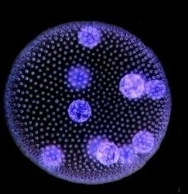Cell Biology- Structure of a cell | Biology library | Science – Khan Academy
What is a Cell Biology?
Cell Biology- The cell is the basic unit of life. The cell membrane is covered with a membrane, consists of several layers of molecules, and has a lipid (fatty) nature. A semi-permeable cell membrane selectively conducts substances. The cytoplasm is the semi-fluid environment inside the cell. It contains cell organelles such as the nucleus, nucleolus, ribosomes, lysosomes, mitochondria, Golgi complex, endoplasmic reticulum, cell center, and membrane
Each organelle performs a certain function. For example, mitochondria are the cell’s energy source, ribosomes serve for protein production. The nucleus is the main source of cell division. Inside the nucleus, there are thread-like fibers – chromosomes. The number of human chromosomes in the cell nucleus is 23 pairs. They are the main source of genetic material.

Also Read:
- What is Genetics? Definitions, Molecular and Human Demand, its Examples
- What is Zoology, Definitions, its History, Branches and Careers
- What is Microbiology, Definitions, History, microorganisms and its Applications
Chemical composition of Cell
The cell consists of various chemical compounds, which are divided into two groups:
1) Organic compounds
2) Inorganic compounds
Organic compounds of the cell
First of all, this group includes proteins, fats, carbohydrates, and nucleic acids. These compounds play a major role in the performance of this or that task (Fig. 2).
Proteins are the main and very complex substance of every cell. The molecules of inorganic compounds are hundreds and thousands of times larger. Proteins are the source of life. There are some proteins that speed up chemical reactions and act as catalysts, they are called enzymes.
Fats and carbohydrates are the “building materials” of the cell and serve as a source of energy for the vital activity of the body. Nucleic acids are produced in the cell nucleus. The name of acids is derived from the Latin word (nucleus – nucleus).
Inorganic compounds of the cell
These compounds include water and mineral salts. The amount of water in the cell is the highest, it is almost 80% and it participates in all life processes. Nutrients of the solution consist of intercellular substances that enter the cell through the membrane.
Water also helps to remove from the cell substances that are formed as a result of chemical reactions. Mineral salts are not abundant in the cytoplasm and play a major role in cell life. These salts include potassium (K+), calcium (Ca+), sodium (Na+), magnesium (Mg+) and others.
The vitality of cell-Internal Environment of Body
Metabolism is the main life characteristic of the cell. In the cell, nutrients are regularly supplied with oxygen, and decomposition products are released. These substances participate in the biochemical process and ensure the formation of proteins, fats, carbohydrates, and their compounds, which consist of simple substances. Derived substances are specific to certain cells of the body. For example, proteins are broken down in muscles and ensure their contraction. Along with biological decomposition, organic compounds occur in cells, and the composition of complex substances becomes simpler.
Almost all decomposition reactions involve oxygen gas, water, and energy release. The resulting energy is needed by the cell. Cells are characterized by germination and growth. As a result of division, two daughter cells are formed from one mother cell. They develop and grow like a mother cell. Cells live from a few hours to tens, hundreds of hours. Living cells sense physical and chemical factors.
They are called excitability. The cell is stimulated under the influence of external factors. It changes the rate of biological synthesis, decomposition of substances, oxygen demand, and temperature. This is how cells perform their specific function. Example: a gland cell secretes different products. Muscle cells contract. In the nerve cell, the received message is distributed.
Internal Cell
The Internal environment of the body is so much more flexible. Most of the body’s cells are not connected to the external environment. Their crucial activity is provided by the internal clean environment. This environment consists of three fluids: intercellular, blood, and lymph fluid. These substances, on the one hand, provide the cell with materials necessary for life; on the other hand, the decomposition products are removed from the cell. The composition and physical and chemical properties of these substances are relatively constant in the cell, and this ensures the normal functioning of the cell.
The Structure of the Plant Cell:
The protoplast cell consists of a nucleus, cytoplasm, and other organelles. It should be noted that these organelles can be divided into membrane and non-membrane.
In the cytoplasm, there is a multi-component system in which the main steps of the body and transport exist. The cytoplasm contains a network of microfilament essence – thin fibrous proteins that cause the movement of structures. Here, microtubules and centrioles are involved in the mitotic cell unit.
Another important group of organelles is a ribosome, which is a non-membrane structure. Each ribosome consists of small and large subunits. By and large, these organelles are none other than complex protein elements and special ribosomal RNA. Such structures are involved in protein synthesis